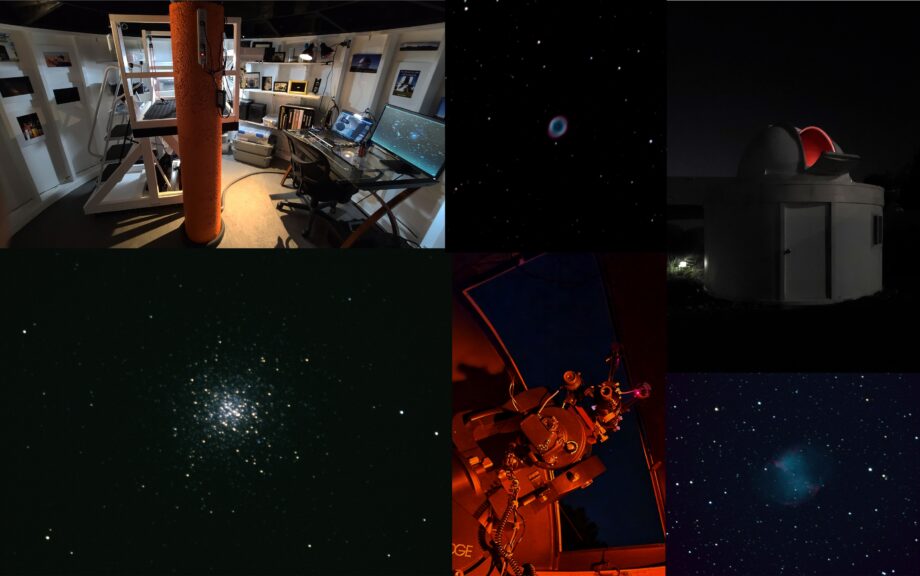Since I was a young boy, I have been fascinated with the universe and everything in it—from the micro level to the macro! Santa Claus brought me a microscope when I was 10. My parents gave me a telescope when I turned 12. I spent many happy hours hiking, camping, and learning about nature as a Boy Scout (and later as a Scoutmaster). Throughout my entire life, I have enjoyed my explorations and studies in the areas of biology, geology/mineralogy, and astronomy.
The first time I focused my little telescope on the moon, I was awestruck! I couldn’t believe how well I could see the craters, maria, and mountains. I threw myself into studying the starry sky. I checked out all the books on astronomy from the library—even those I couldn’t begin to understand. I saved my money from my summer job and purchased a larger telescope. I learned to navigate the night sky and started showing family, friends, and neighbors planets, star clusters, nebulae, and far-away galaxies.
Eventually, I started speaking to various groups in the community. I would always take my telescopes along to show participants objects in the sky from my presentations. While speaking to students at the University of Utah, I met my future wife (a student in the audience). We’ve been stargazing together ever since!
In the 1970s, my friend and his dad build a backyard observatory. I determined that someday I would build an observatory of my own. In the summer of 2006, “Pleasant Valley Observatory,” which I designed and built, became operational. Since then, I have spent countless hours observing the cosmos through my telescopes—and sharing many wondrous views with family and friends.
Last week, I spent an entire night viewing and photographing the cosmos (I finally went to bed at 5 am). I took a number of short-exposure photos. Three are in the picture.
M13, the “Great Globular Cluster” in Hercules. It is 145 light years (lys) in diameter. One ly is approximately 6 trillion miles. M13 contains about 200,000 stars and is located 25,000 lys away—toward the center of our Milky Way Galaxy.
M57, the “Ring Nebula” in Lyra, is a planetary nebula (remains of a dying star). It has a diameter of 2.6 lys and lies at a distance of 2,283 lys.
M27, the “Dumbbell Nebula” in Vulpecula, is also a planetary nebula. It has a diameter of 2.9 lys and lies at a distance of 1360 lys.
Whenever I enter my observatory and open the shutter on the dome for a night of viewing, I experience a thrill of anticipation—similar to what one gets when they are getting together with an old friend. As the city finally goes to sleep in the early morning hours, I luxuriate in the quiet darkness of the night. Then, it’s just me and my dear friend the cosmos.
I’ve been asked many times, “Do you ever become afraid—being alone in the dark?” I always respond with words I borrowed from Sarah Williams. “I have loved the stars too fondly to be fearful of the night.”
Clear skies everyone!

